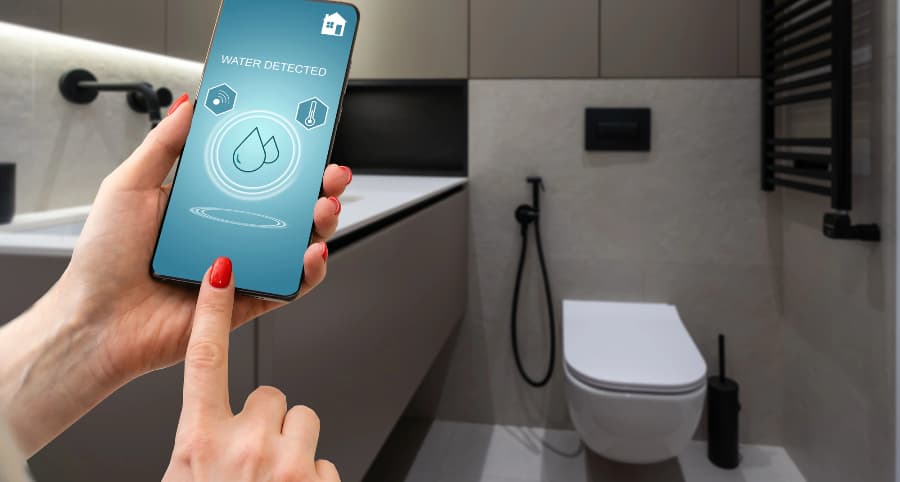How does a water sensor work and why connect one to your Buffalo smart home?

One tiny leak in your home can result in significant problems and thousands of dollars in damage. You have to safeguard against this threat; thankfully, there’s a straightforward way to do so. A water sensor is an effective, simple, and economical solution. Learn how they work and why you should connect water sensors to your Buffalo smart home.
How water sensors safeguard Buffalo properties
Water infiltrates homes in various ways, whether from a weather-related event, plumbing issue, appliance breakdown, or human error. However it happens, you need to know immediately, and this is why water sensors are important. But how precisely do they work?
The majority of water sensors are conductive and work with two electrodes. When water invades the space between the electrodes, an electrical circuit is created, triggering your alarm. You’ll also come across capacitive sensors that give off an electrical field. When water reaches the conductive parts of these components, the field is broken, and your alarm triggers. Optical sensors utilizing infrared LED light are an additional choice.
Some water sensors give you more
A few advanced water sensors offer even more peace of mind as they feature incorporated temperature sensors. This is a helpful way to prevent frozen pipes. If there’s a drastic drop in temperature, you’ll be notified immediately. Taking steps before pipes burst will shield you from water damage and expensive repairs.
Why connect water sensors to your Buffalo smart home?
When water problems happen, you need to be alerted right away. You can achieve this aim by incorporating water sensors into your smart home. Whether you’re there to hear the alarm or not, you’ll be sent an automatic alert on your mobile device. As an added benefit, your 24-hour monitoring specialists will be informed. Every second is critical in a water emergency to minimize the damage and disturbance to your life.
Where should you place water sensors?
Any spot susceptible to flooding is an ideal position for water sensors. Install them in these spots:
- Bathrooms: Attach in back of toilets or close to tubs.
- Basements: Water frequently enters lower floors through cracked walls or because of heavy rain or broken sump pumps.
- Near water heaters or appliances: Any water-utilizing appliance could leak at some point.
- Under sinks: Water sensors are ideal for discovering plumbing leaks in areas you can’t see.
- Attics: Detect roof leaks early and prevent costly damage.
Install water sensors with your Vivint smart home
Give your property the complete protection it deserves with Vivint’s modern devices. Our water sensors in Buffalo integrate with your Vivint smartphone app to provide automatic notifications when your alarm goes off. You also enjoy built-in temperature sensors to prevent pipe freezing. Learn more about the smart home tools available in Buffalo by calling (716) 567-8226 today.
